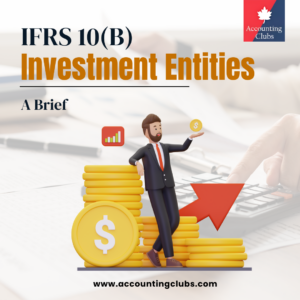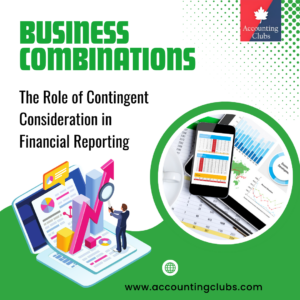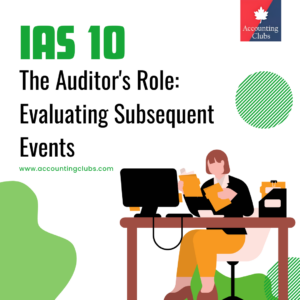Navigating the Labyrinth: Decoding the Notes to the Financial Statements

While the primary financial statements provide a structured overview, the true depth of a company’s financial story lies within the notes. Imagine the notes as hidden passages branching off from the main corridors of the financial labyrinth. Here, companies delve into greater detail, explaining the nitty-gritty of their financial performance and position. Understanding how to navigate these notes unlocks a wealth of information crucial for informed decision-making.

Accounting Policies: The Foundation for Interpretation
One key section within the notes focuses on accounting policies. Here, companies disclose the specific accounting principles they’ve adopted to prepare their financial statements. These policies govern how the company recognizes, measures, presents, and disclose financial information. Understanding these chosen policies is vital for interpreting the numbers presented in the primary financial statements.
For instance, a company might disclose its policy for valuing inventory (e.g., FIFO, LIFO, weighted average cost). Different valuation methods can yield different values for the same inventory, impacting reported profitability and future cash flows. Knowing the chosen method allows users to compare the company’s financial performance with competitors who might use different policies.
Critical Accounting Estimates: Unveiling Potential Risks
Certain accounting principles require companies to make estimates based on judgment and assumptions. These estimates, often referred to as critical accounting estimates, can significantly impact the reported financial statements. IFRS 18 mandates the disclosure of these estimates along with the potential impact of changes in those estimates.
Let’s consider an example. A company might disclose its estimate for the useful life of its machinery and equipment. This estimate directly affects depreciation expense, a non-cash charge that reduces reported profits. If the company revises its estimate upwards (extending the useful life), depreciation expense would decrease, potentially boosting reported profits. Conversely, a downward revision would increase depreciation expense, lowering reported profits. By disclosing these critical estimates and their potential impact, the notes provide valuable insights into the inherent uncertainties associated with a company’s financial performance.
Segment Reporting: A Deeper Look at Business Performance

The financial statements often present a company’s overall financial performance. However, many companies operate in diverse business segments with varying risk profiles and growth trajectories. IFRS 18 mandates segment reporting, a section within the notes that sheds light on the performance of each segment. This allows users to assess the specific contributions of each segment to the overall company performance and identify potential areas of risk or opportunity.
For instance, a conglomerate might disclose financial results for its manufacturing and retail divisions separately. This allows investors to identify which segments are driving growth and profitability. A manufacturing segment might be experiencing strong demand and profitability, while the retail segment might be facing headwinds due to changing consumer preferences. Understanding this segment-level information empowers investors to make more informed decisions about their investments.
Beyond the Mandates: Unveiling Additional Insights
While IFRS 18 prescribes specific disclosures, companies can also include additional information within the notes that they deem valuable for stakeholders. This can range from explanations of significant events during the reporting period to details about future financing plans. By carefully reviewing these voluntary disclosures, users can gain a more comprehensive understanding of the company’s strategic direction and potential future performance.
The Importance of Critical Thinking
The notes to the financial statements are a treasure trove of information, but it’s crucial to approach them with a critical eye. Not all disclosures are created equal. Companies might use them to manage perceptions or downplay challenges. Here are some key considerations for effective analysis:

- Consistency: Compare the current year’s disclosures with those of previous years to identify any significant changes. Inconsistent disclosures can raise questions about the comparability of financial information over time.
- Reasonableness: Assess the reasonableness of the information presented. Do the explanations provided seem plausible in light of the overall financial performance? If something seems amiss, further research might be necessary.
- Management’s Discussion and Analysis (MD&A): Many companies include an MD&A within their annual report. This section provides management’s perspective on the company’s financial performance, liquidity, and capital resources. Reading the MD&A alongside the notes offers a more holistic understanding of the company’s financial health and future prospects.
By developing a critical lens and considering these factors, you can extract the most valuable insights from the notes to the financial statements, empowering you to make informed decisions in the complex world of finance.
Statement of Changes in Equity: Tracking the Company’s Net Worth
Imagine the statement of changes in equity as a company’s internal financial diary. It meticulously records how the company’s net worth (equity) ebbs and flows over time. This statement considers several factors that contribute to these changes:
- Profit or Loss: This is the company’s core financial performance metric, reflecting the profitability of its operations. A positive profit adds to the company’s net worth, while a loss diminishes it.
- Other Comprehensive Income (OCI): As discussed earlier, OCI includes items that impact a company’s financial well-being but don’t directly affect cash flow. These can be positive, like gains from foreign currency revaluation, or negative, like losses from the fair value changes of certain investments.
- Transactions with Owners: This category encompasses activities that directly affect the company’s ownership structure and equity. Examples include:
- Issuing New Shares: When a company issues new shares, it raises capital, increasing its equity.
- Repurchasing Shares (Treasury Stock): When a company buys back its own shares, it reduces the number of outstanding shares, potentially impacting the value of remaining shares and overall equity.
- Dividend Payments: Dividends are distributions of a company’s profits to its shareholders. These payments decrease the company’s retained earnings, a component of equity.
By analyzing these changes in the statement of equity, stakeholders can gain valuable insights into a company’s:
- Growth Strategy: A continuous increase in equity, primarily driven by retained earnings, suggests a focus on internal growth and reinvestment of profits. Conversely, frequent issuance of new shares might indicate a need for external funding to support expansion plans.
- Dividend Policy: The level and consistency of dividend payments provide clues about a company’s approach to distributing profits to shareholders. A conservative dividend policy might prioritize reinvestment, while a generous payout suggests a focus on shareholder returns.
- Financial Stability: A declining trend in equity over time could raise concerns about the company’s ability to sustain its operations and meet its financial obligations.

The Financial Labyrinth Demystified
With IFRS 18 as your guide, navigating the labyrinth of financial statements becomes a rewarding journey. The primary financial statements provide a structured overview, while the notes offer a deeper dive into the intricacies of a company’s financial health. By equipping yourself with the knowledge to interpret both, you gain the power to assess a company’s true financial performance, identify potential risks and opportunities, and make informed decisions that can impact your financial future. Remember, financial literacy is a continuous learning.
Tag:accounting, esg, ias, ifrs, solutions











